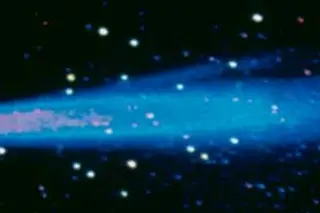As a child, Mike Brown had all the trappings of an astronomer in the making, with space books, rocket drawings, and a poster of the planets on his bedroom wall. The poster depicted Pluto as “this crazy and very eccentric planet,” he says. “It was everyone’s favorite crazy planet.” Brown, now an astronomer at Caltech, still recalls the mnemonic he learned for the names of the planets: Martha visits every Monday and (the a was for asteroids) just stays until noon, period. “The ‘period,’ for Pluto, was always suspicious,” Brown says with a laugh. “It didn’t seem to fit. So maybe that was when I first got the idea that Pluto didn’t belong.”
Brown’s childhood insight now sounds like a premonition. In August 2006 the International Astronomical Unionofficially demoted Pluto, putting it into the new category of “dwarf planet,” a sun-orbiting object big enough to be forced into a spherical ...















